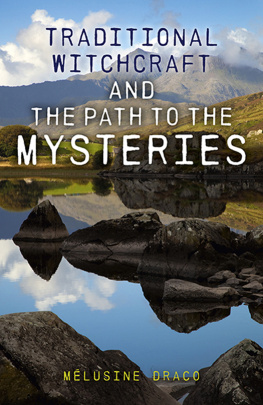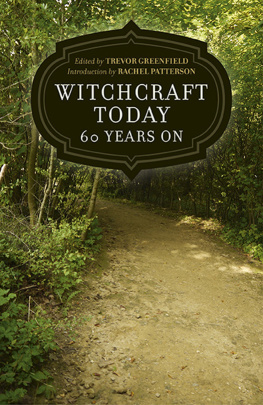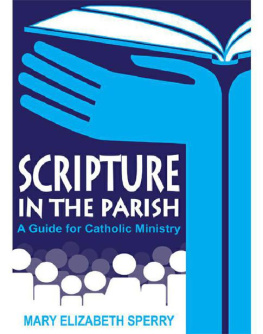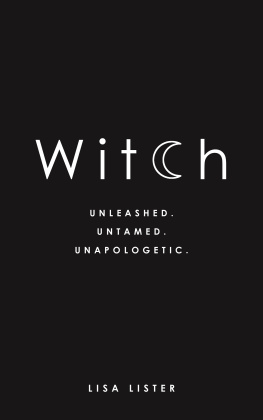WHAT PEOPLE ARE SAYING ABOUT
THE SECRET PEOPLE
The Secret People is all about the kind of practical folklore our grandmothers and great-grandmothers would have used in their daily lives when planting a cottage garden, foraging for herbs in the hedgerows, treating family ailments and making the most of what was around the house. It is also about the secret folklore they would have known, from love charms and fortune-telling to protection spells and magical cures. The book is both really useful and a delight to read. Mlusine said that it would take me on a trip down memory lane, and it certainly did.
Lucya Starza, author of Pagan Portals: Candle Magic and witch
Ive so looked forward to this book. It high time our old ways came to light again so that we can all remember and use them. Draco writes in a style that is easy to read and her knowledge of the old ways is enormous. Anyone who wants to get back into the old customs and traditions of Britain will find this book a source to be treasured.
Elen Sentier, author of Shaman Pathways: Elen of the Ways, shaman and wise woman
A fascinating read bringing together the history of all the wise women, men and cunning-folk that came before us creating the folklore that we know and draw from today. Reminding us that a lot of what we practise now stems from a time long forgotten, from the home to the fields and all the interesting folk you meet on the way.
Rachel Patterson, author of A Kitchen Witchs World of Magical Food and witch
First published by Moon Books, 2016
Moon Books is an imprint of John Hunt Publishing Ltd., Laurel House, Station Approach, Alresford, Hants, SO24 9JH, UK
www.johnhuntpublishing.com
www.moon-books.net
For distributor details and how to order please visit the Ordering section on our website.
Text copyright: Mlusine Draco 2015
ISBN: 978 1 78535 444 1
Library of Congress Control Number: 2016936942
All rights reserved. Except for brief quotations in critical articles or reviews, no part of this book may be reproduced in any manner without prior written permission from the publishers.
The rights of Mlusine Draco as author have been asserted in accordance with the Copyright, Designs and Patents Act 1988.
A CIP catalogue record for this book is available from the British Library.
Design: Stuart Davies
Printed and bound by CPI Group (UK) Ltd, Croydon, CR0 4YY, UK
We operate a distinctive and ethical publishing philosophy in all areas of our business, from our global network of authors to production and worldwide distribution.
Dedicated to the memory of my Father
who taught me to walk softly in the Wild Wood
About the Author
Mlusine Dracos highly individualistic teaching methods and writing draw on historical sources supported by academic texts and current archaeological findings; endorsing the view that magic is an amalgam of science and art, and that magic is the outer route to the inner Mysteries. Author of several titles currently published with John Hunt Publishing including the best-selling six-part Traditional Witchcraft series; two titles on power animals Aubrys Dog and Black Horse, White Horse; By Spellbook & Candle: Cursing, Hexing, Bottling and Binding; The Dictionary of Magic & Mystery published by Moon Books; Magic Crystals Sacred Stones and The Atum-Re Revival published by Axis Mundi Books, she is also Principal of Coven of the Scales and the Temple of Khem.
Website: http://www.covenofthescales.com
Website: http://www.templeofkhem.com
Blog: http://melusinedracoattempleofkhem.blogspot.com/
Facebook:
https://www.facebook.com/Melusine-Draco-486677478165958
Facebook: http://www.facebook.com/TradBritOldCraft
Facebook: http://www.facebook.com/TempleofKhem
Facebook: http://www.facebook.com/TempleHouseArchive
Introduction: Who am I?
Much of what passes for witchcraft today was everyday knowledge to our forebears, especially those who lived and worked in the countryside. Here were to be found practical household hints, remedies and family recipes that had been handed down from generation to generation, some still existing in the form of treasured journals and notebooks. There is, however, nothing fanciful or far-fetched about this information in fact, The Secret People is a remembrance of times past and a preservation of parish-pump witchcraft, wise woman and cunning ways adapted for use in the 21st century. It may also go a long way in helping those present generation pagans in search of an identity and answer the questions: Who am I? What am I?
Most pagans now realise that the majority of Victorian compilations on superstitions are filled with protective charms against witchcraft, or warnings about the unlucky associations or omens attached to certain flora and fauna. For the genuine witch, no plant or animal is considered unlucky since each has its own propensities that make it an integral part of Craft-lore. Because of the part certain plants played in healing, many were labelled evil or unlucky merely on account of them being part of the local wise womans stock in trade.
In both a historical and a social context, the wise woman was an important member of the community. A R Myers (England in the Late Middle Ages) recorded that when peasants fell ill, they relied chiefly on these local women, wise in the lore of herbs and other traditional remedies. Eric Maple (Man, Myth & Magic) also pointed out that what is not generally admitted is that in her heyday, the rural wise woman was doctor, veterinary surgeon and detective, called out to cure illness, administer to livestock and locate missing belongings in return for a gift to supplement her meagre lifestyle.
Cunning folk were often travelling practitioners of domestic plant medicine, folk magic, and divination from medieval times up until the mid 20th century when the practice was slowly absorbed by the newly emerging neo-paganism. Like the European Romany, the basic belief of many cunning folk was generally Christianity and it was unusual for a cunning man or woman to actually be accused of witchcraft. The word cunning means knowledge or skilful and was widely used in various contexts in Middle English from the 14th century onwards. Often a grandmother fondly remembered for reading the tea leaves and using plants from the garden to soothe childhood cuts and grazes, was keeping alive the traditions of the cunning folk without realising it.
According to Steve Roud in The Penguin Guide to Superstitions of Britain and Ireland:
Cunning men and women were a regular feature of village and small town life for centuriesthe majority of the populace would be well aware of who claimed powers in what context, and would could be paid for occult assistance, when necessaryThe standard fare for the average cunning man or woman would also include fortune-telling, by various means, the location of lost or stolen property, love magic, the identification of spells cast upon the clientand measures to counter them, and magical healing techniques
Margaret Murray (The God of the Witches) wrote that the contemporary idea of the witch is founded entirely in the records of the 16th and 18th centuries, when the Church was still hell-bent on eradicating the last vestiges of paganism. This action was reinforced by support from the emerging medical profession, which viewed parish-pump witchcraft as its most dangerous rival. As a result, local witches and wise women were often forced to administer their skills in secret for fear of reprisal. Over the years, however, many of the cures and charms were updated to exclude any traditional practices and to keep superstitions in line with Church teaching, with many old charms now being addressed to saints since the Devil was associated with native customs.











